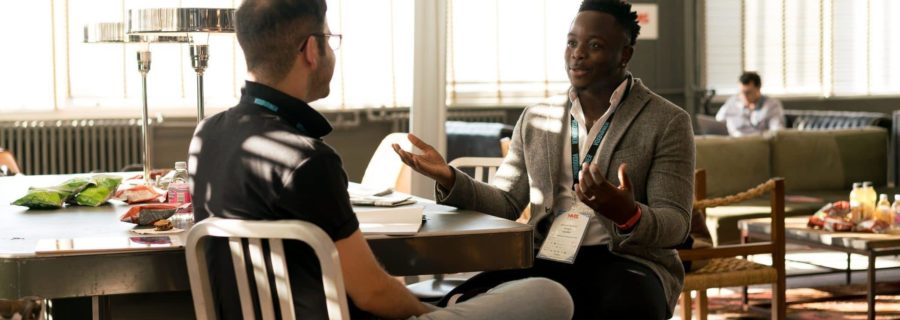This is a guest post from KBRS (Knightsbridge Robertson Surrette)
(Member since 1985)
How to find growth in conflict
Recently, I had the pleasure of delivering a constructive conflict workshop to a group of local leaders. Going in, on a Friday afternoon after two days of meetings and what looked to be a hearty lunch, I wondered about the energy of the crowd. However, when I arrived, the room was full, and people were eager and ready. Constructive conflict is a hot topic these days and one that was particularly relevant for this group.
Preparing to embark on a major transformational change initiative these leaders had fallen prey to the all too common groupthink syndrome. In order to drive success, they knew they needed to collaborate with other teams and organizations, think outside of the box and challenge each other’s thinking.
Within the two-hour workshop, we discussed the value of constructive conflict in the pursuit of collaboration and innovation, explored a conflict model and completed a quick self-assessment to uncover the way they typically approach, or avoid, conflict so they can more easily flex when needed.
Among the strategies discussed was a simple yet powerful rule of thumb — adopt a mindset of curiosity.
The underlying theme being: you can’t be both defensive and curious at the same time. When a person is in defense mode, they become self-absorbed, lose perspective and quickly become too attached to their own way of thinking. The easiest and most effective way to escape this pitfall is to adopt a mindset of curiosity. Once a person begins to ask questions, probe and get curious about the other person’s perspective it will pave the way for a more constructive conversation and, as a result, better outcomes.
More often than not, the challenge isn’t what is being said, it is the meaning behind what’s being said.
The more you exercise this muscle — adopting a curious mindset — the more natural it will become, and, as some of those leaders have already discovered, the more success you’ll have navigating through challenging conversations.
So next time:
When this happens …
I feel myself reacting to a “stupid” comment said by someone
Try … “Help me understand what you're trying to achieve …”
When this happens …
I perceive a negative reaction in someone to what I've said
Try …
“I get the sense we're not on the same page here. Tell me more about what you're thinking.”
When this happens …
Someone starts expressing strong views or emotions during the conversation
Try …
“This sounds like an important point to you. I'd like to understand that better. Tell me more …”
When this happens …
The discussion goes off track
Try …
“I think we might be losing focus. Tell me how this fits in?”
When this happens …
Several comments are on the table or multiple people are speaking at one time
Try …
“We have three ideas on the table, let's tackle them one at a time.”
< Back to Articles | Topics: Trends

